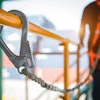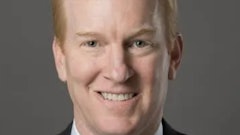By Pete Ruane, president and CEO, American Road & Transportation Builders Association
In today's Washington, transportation funding has become just another political football. It's been 28 months since the last law expired, and Congress, driven by bitter partisan bickering, has failed to agree to a new one.
Such bickering is unfortunate, because jobs and growth are at stake. In addition, this feuding is ahistorical; in the past, the major political parties tended to agree that robust transportation was vital not only to our economic strength but also to our military strength. In fact, it's still the case that a strong America rests on the wheels and wings of mobility.
So the challenge facing those seeking America's full and complete comeback is this: to remind political leaders that an economy that's "built to last" - as President Obama said in this year's State of the Union address - must be powered by the ability to move tangible goods from place to place. Manufacturers, farmers and resource extractors all know that getting goods to market - including the international market - is the key to new hires and new revenues.
The United States was built on this common-sense idea, as Alexander Hamilton, our first Treasury secretary, argued for its necessity as a national economic and defense strategy. In his famous Report on Manufactures, delivered to President George Washington in 1791, Hamilton declared that the United States needed a great productive capacity in order to become a great international power. Indeed, Hamilton devoted a whole section to "the facilitating of the transportation of commodities." As the report read, "Good roads, canals, and navigable rivers, by diminishing the expense of carriage ... are ... the greatest of all improvements."
Interestingly, Hamilton's legendary political rival, Thomas Jefferson, concurred on what turned out to be the most critical transportation issue of the era: construction of the National Road, which Jefferson, as president, proposed in 1806. The National Road ultimately stretched from Cumberland, Md., to Vandalia, Ill. Those 600 miles of roadway enabled pioneers and traders to move their wagons west, opening up to economic development the frontier lands of Ohio, Indiana and Illinois. In the most literal sense, the National Road was the key to American nation-building.
Later in the 19th century, the completion of a transcontinental railroad, all the way west to California, was deemed so important that President Lincoln started construction in 1862, during the middle of the Civil War.
A century later, President Eisenhower urged the building of the interstate highways, in part as a defense measure. As a military man, Eisenhower had been appalled by the contrast between the spotty roads in the U.S. and the excellent highway networks he had seen in Europe. So as president, he worked with the Democratic Congress to bring transportation to the top of the nation's agenda. Ike wrote later in his memoir, "More than any single action by the government since the end of the war, this one would change the face of America. ... Its impact on the American economy - the jobs it would produce in manufacturing and construction, the rural areas it would open up - was beyond calculation."
So that's the historical record - both parties working together to develop and expand the U.S. economy. Today, some observers claim that America no longer needs that sort of basic transportation infrastructure because the economy, they assert, now depends on finance and services. Yet since 1982, the amount of car and truck traffic in the nation has almost doubled, while highway capacity has grown less than 7 percent. As a result, the average driver spends 40 hours each year in traffic gridlock, nearly triple the amount of three decades ago. That's a huge drain on the national psyche as well as a huge cost to the national economy.
Fortunately, leaders of both parties are beginning to focus, once again, on transportation. From comments in the State of the Union address to multiple actions in both the House and Senate in recent days, transportation finally is in the mix. But is this just for "message" purposes to score points for the 2012 election campaigns? How will we measure today's leaders on transportation issues? Will they fumble the political football they tossed around in the past few years or put their partisan differences aside and move the country forward?
Today's leaders need to think big. They should seek inspiration from the past, from such visionaries as Hamilton, Jefferson, Lincoln and Eisenhower. Those leaders saw transportation in its proper context - as the pathway to national economic strength and power.



















